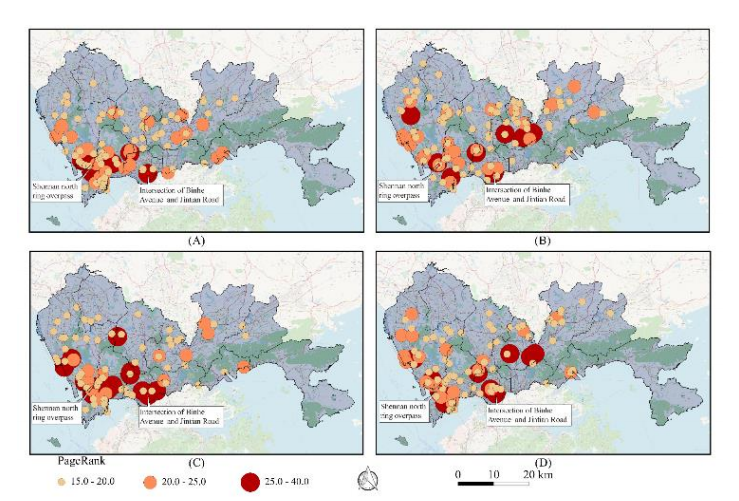ABSTRAT
The development of geospatial big data makes it possible to study traffic congestion issues through floating car data (FCD). FCD can help predict the traffic congestion bottlenecks and provide corresponding solutions to addrestraffic problems. However, few studies have focused on the distribution and changes in traffic congestion bottlenecks throughout a mega-city. This study proposes an index calculation and clustering (ICC) model by integrating PageRank and clustering algorithms via multisource dataincluding rainfall data, FCD and OpenStreetMap data. We selected Shenzhen, the largest developed city in South Chinaas the study area. The results demonstrate that there are three peak periods of citizen travel: 8:00-10:00, 14:00-16:00, and 18:00-20:00. Road speeds after rainfall decrease, and traffic congestion areas increase. The results also quantitatively analyzed the differences of traffic congestion between work day and rest day. The proposed ICC model can offer a thorough understanding of urban traffic congestion areaswhich can help policy makers optimize alleviation strategies.

Q.E.D.









